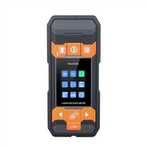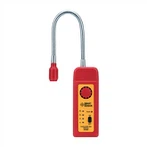Is there any error between the multimeter reading and the real value?
The error of the instrument is composed of reading error and range error. Reading error: the difference between the instrument reading and the true value of the measured parameter; range error: the difference between the actual output range and the specified output range.
For example, the following ruler measures the length and can distinguish 1mm, but when you measure a length of 1mm, there is still an error between the measured data and the actual value.
There are three common ways of expressing accuracy:
Accuracy = ± (a % RDG + b% FS )
Accuracy = ± (a % RDG + n words)
Accuracy = ± ppm RDG
RDG is the reading value (that is, the display value), FS represents the full-scale value, and n characters represent the change in the number at the end (word: refers to the total value that the instrument can display, such as a 50,000-character instrument, any gear Only 50,000 values can be displayed below)
Taking Puyuan DM3058 as an example, when the instrument displays a reading of 50uA, the measurement error of the instrument = ±(a % RDG + b% FS ) = ± (50 * 0.055% + 500 * 0.005%) uA = ± (0.0275 + 0.025)uA = 0.0525uA = 52nA
The DC current range is 500uA, when the instrument displays a reading of 50uA, the error measured by the instrument = ± (a % RDG + n words) = ± (500 * 0.05% + 0.05)uA = 0.30uA = 300nA ;
(Note: GWD GDM8300 instrument has 50000 words, 500uA range can be displayed from 0.00 to 499.99; 5 words = 5 × (500uA÷50000) = 0.05uA)
When the value read by the instrument is 50uA, there is an error with the actual true value. When we choose a multimeter, we should also consider whether we accept this error. As in the above example, the resolution of GDM-8341 can reach 10nA, but it still does not meet the measurement error of 100nA, so it can only give up the advantage of cheap price.






